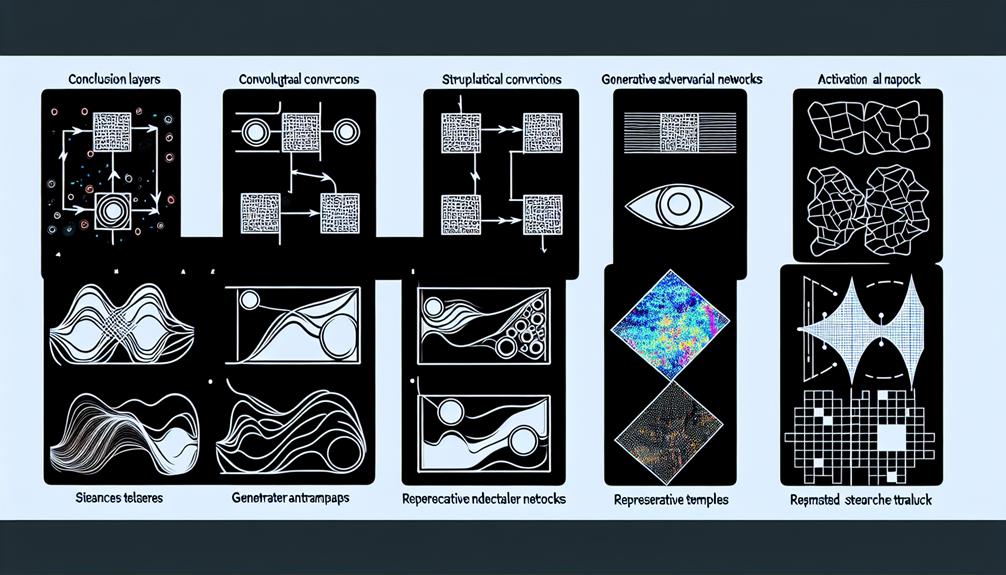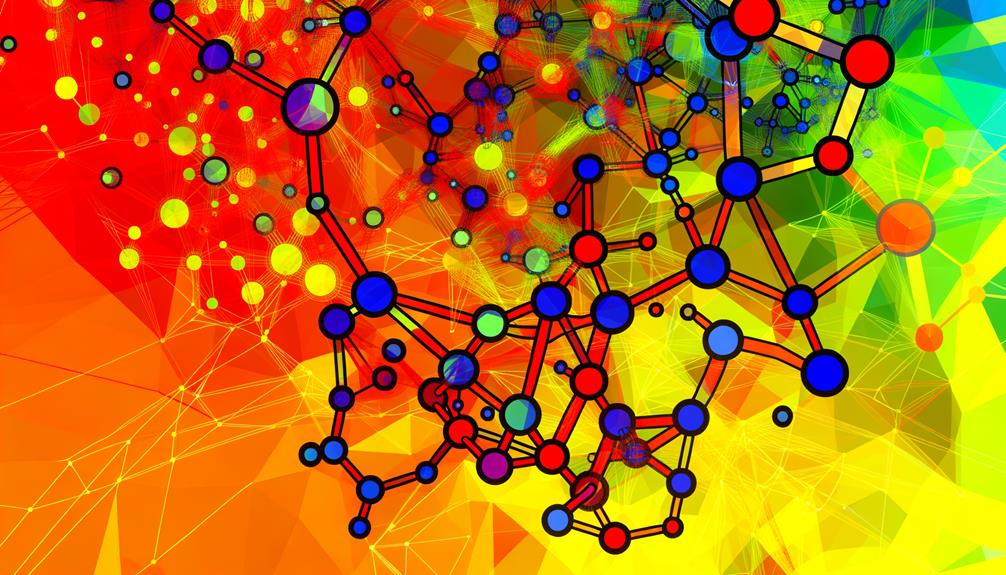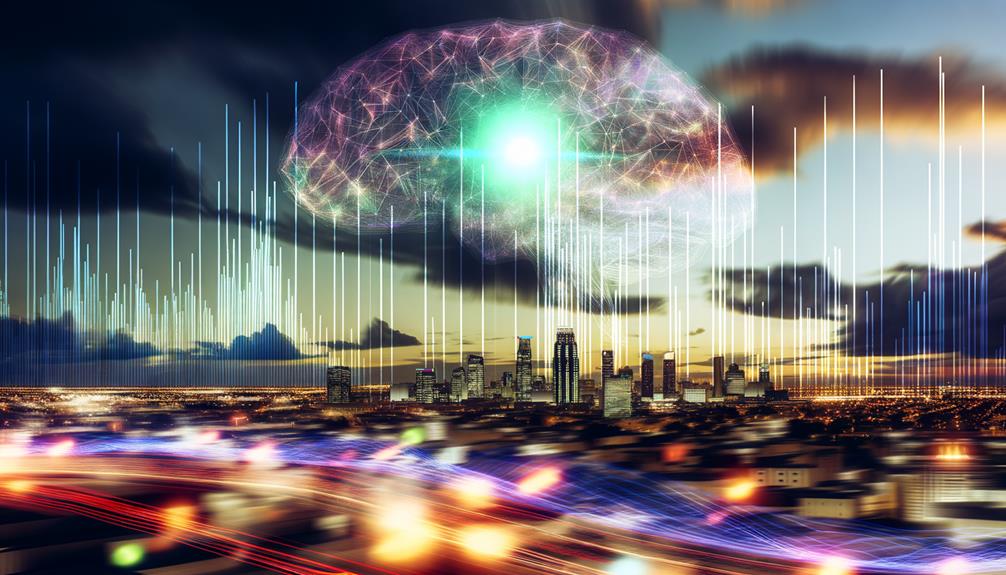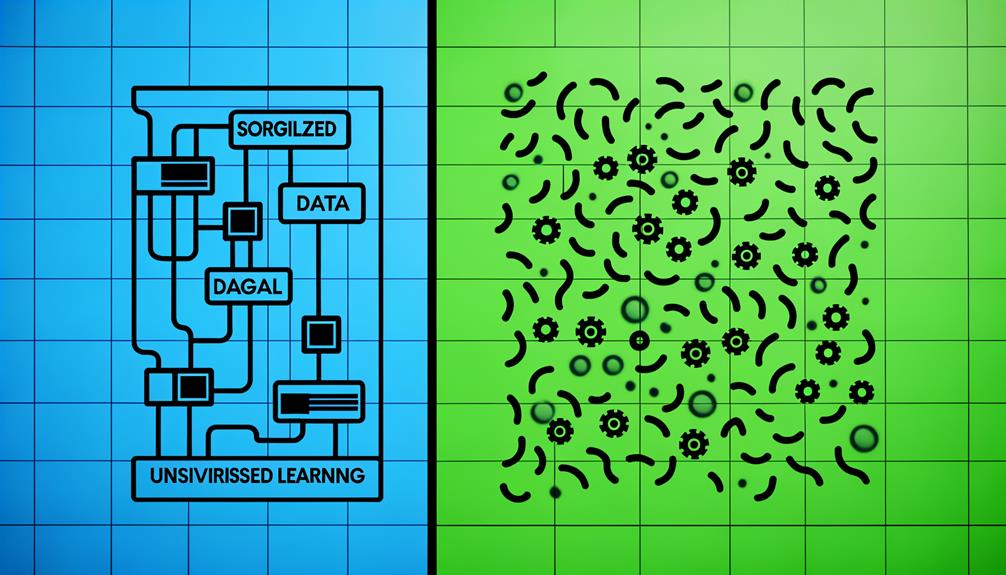When it comes to image recognition, three machine learning algorithms stand out for their exceptional performance and versatility: YOLO (you only look once) models, Convolutional Neural Networks (CNNs), and real-time image processing techniques. YOLO models revolutionized real-time object detection by processing images in a single forward pass, predicting bounding boxes and class probabilities simultaneously. CNNs excel in image recognition by learning hierarchical features and are effective in object detection, classification, and segmentation. Real-time image processing integrates efficient algorithms like CNNs to rapidly analyze and interpret images. These advanced tools will reveal deeper insights into the world of image recognition.
Key Takeaways
- Convolutional Neural Networks (CNNs): Excel in image recognition by learning hierarchical features from structured grid data.
- You Only Look Once (YOLO): Efficiently detects multiple objects in images and videos in a single forward pass.
- Faster Region-based CNN (Faster RCNN): Uses a Region Proposal Network (RPN) for feature detection and processes images under 200ms.
- YOLOv9: A new architecture released in early 2024 for training object detection AI models with state-of-the-art performance.
- Single Shot Detector (SSD): Flexibly handles objects of varying sizes by discretizing the image into default bounding boxes with different aspect ratios.
Object Detection With YOLO Models
YOLO (You Only Look Once) models have revolutionized the field of real-time object detection, offering a compelling blend of speed and accuracy that makes them a go-to choice for numerous applications. These models are particularly versatile because they process images in a single forward pass, dividing the image into a grid and predicting both bounding boxes and class probabilities simultaneously. This approach allows YOLO models to efficiently detect multiple objects in images and videos while maintaining high accuracy. YOLO models are a staple in various industries, such as autonomous driving, where accurate and rapid object detection is vital for safety and reliability. Additionally, YOLO models are commonly used in surveillance applications where real-time detection is paramount.
The modern updates in YOLO models, such as the propositions in the model.
The latest advancements, such as YOLOv4, sees the inclusion of the CSPDarknet53 backbone and PANet neck, further enhancing the accuracy and speed of object detection. With their end-to-end architecture, YOLO models have proven to be invaluable assets in various domains. As object detection continues to progress, it will be fascinating to see how YOLO models evolve to accommodate even more demanding and diverse applications.
Convolutional Neural Networks (CNNs)
Convolutional Neural Networks (CNNs) have proved to be instrumental in the field of image recognition due to their exceptional ability to automatically learn and extract hierarchical features from images. These deep learning algorithms excel in processing structured grid data like images, making them well-suited for computer vision applications.
The architecture of CNNs consists of three key layers: convolutional, pooling, and fully connected layers, which enable them to detect features like edges, textures, and patterns. This makes them highly effective in tasks such as object detection, classification, and segmentation.
CNNs have been particularly useful for object detection algorithms as they can automatically detect distinct features, making them a popular choice for image recognition tasks. By leveraging their ability to extract meaningful features from images, CNNs have shown superior performance in various image classification benchmarks, further solidifying their position in machine learning algorithms.
Ultimately, the power of CNNs in image recognition lays in their ability to learn and adapt to complex patterns in visual data.
Real-Time Image Processing Techniques

Real-time image processing techniques play an important role in rapidly analyzing and interpreting images as they are captured, greatly enhancing the capabilities of applications like autonomous vehicles, surveillance systems, and augmented reality. These techniques are grounded in efficient algorithms like Convolutional Neural Networks (CNNs) and optimized processing pipelines that enable the swift and accurate interpretation of image data.
To achieve rapid image analysis, real-time processing requires a delicate balance between accuracy and speed. This is made feasible by implementing parallel processing and leveraging hardware acceleration.
Frequently Asked Questions
Which Machine Learning Model Is Best for Images?
Convolutional Neural Networks (CNNs) excel in image recognition due to their hierarchical feature extraction and transfer learning capabilities, making them ideal for real-time image analysis and outperforming traditional models.
What Are the Three Main Types of Machine Learning Algorithms?
The three main types of machine learning algorithms include supervised learning, utilizing convolutional neural networks for structured data, unsupervised learning for feature extraction, and reinforcement learning for trial-and-error dynamics, each catering to diverse image recognition tasks.
What Is the Best Algorithm for Image Classification?
"Convolutional Neural Networks (CNNs) are the best algorithm for image classification, as they can automatically learn hierarchical features, achieving remarkable success in object detection, classification, and segmentation with high accuracy rates."
What Are Three 3 Main Categories of AI Algorithms?
The three primary categories of AI algorithms are Supervised Learning, Unsupervised Learning, and Reinforcement Learning. These distinct approaches enable machine learning to solve various tasks such as image recognition, classification, and decision-making.









